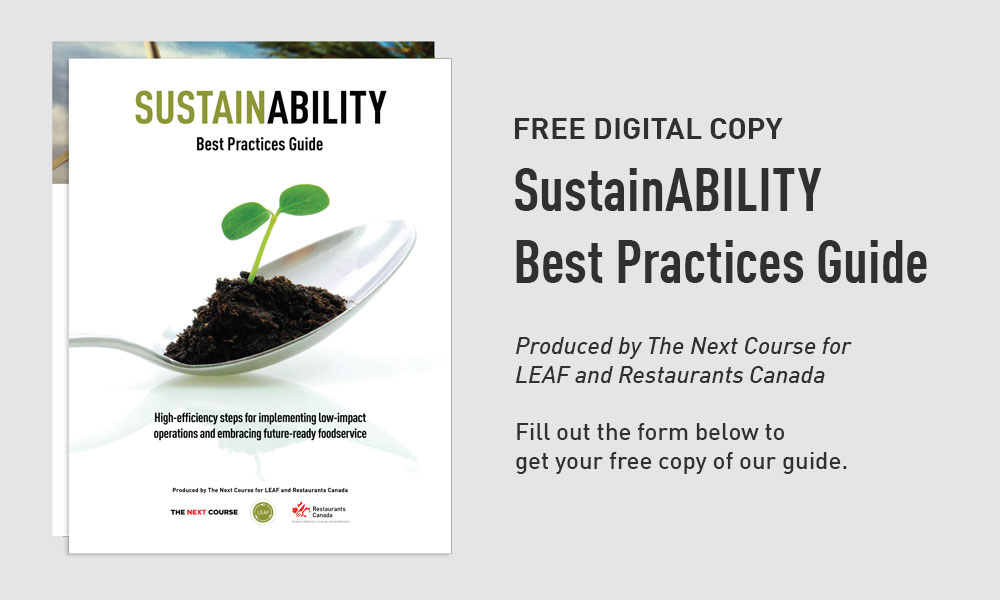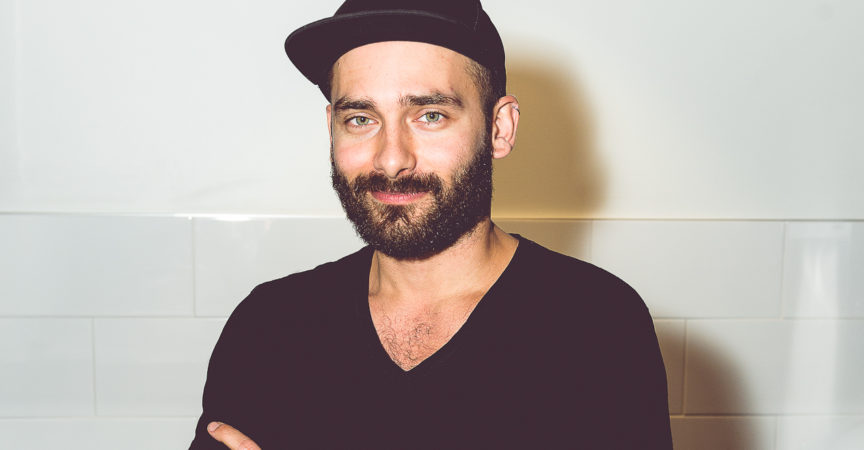Edible Clouds, Biology, Agbots & Bugs
Creative Science and Food Futurism with Dr. Irwin Adam Eydelnant
Khmeli suneli is a traditional Georgian spice mix typically made up of coriander, dill, basil, bay leaf, marjoram, fenugreek, parsley, safflower or saffron, black pepper, celery, thyme, hyssop, mint and hot pepper—this is just one of the surprising things you might learn, by osmosis, from Dr. Irwin Adam Eydelnant. His credentials stretch out in front of him, so far that they get to the room before he does; Dr. Eydelnant holds a Bachelor of Engineering, a Masters of Engineering in Chemical Engineering and a PhD in Biomedical Engineering. With geek cred like this, it is difficult not to picture him in a lab coat with Petri-dish-filled pockets and a calculator. Then in walks Eydelnant just off an airplane hours earlier, sporting a black snapback cap, jeans and a wooly sweater while carrying a cardboard box. From the moment he arrives, Eydelnant is chatting and his ideas begin filling the room. Combining his education with his passions for eating, design and technology, Eydelnant claims that he “has eaten his way around the world.” An academic who easily moves back and forth through the membrane between academia and the world of applied food science and technology, Eydelnant is a disruptive innovator whose work is as unconventional as it is extraordinary, much like him. Founder and creative scientific director for the FUTURE FOOD STUDIO and BEVLAB, Eydelnant is in the business of reimagining and redefining what it means to interact with food and beverage.
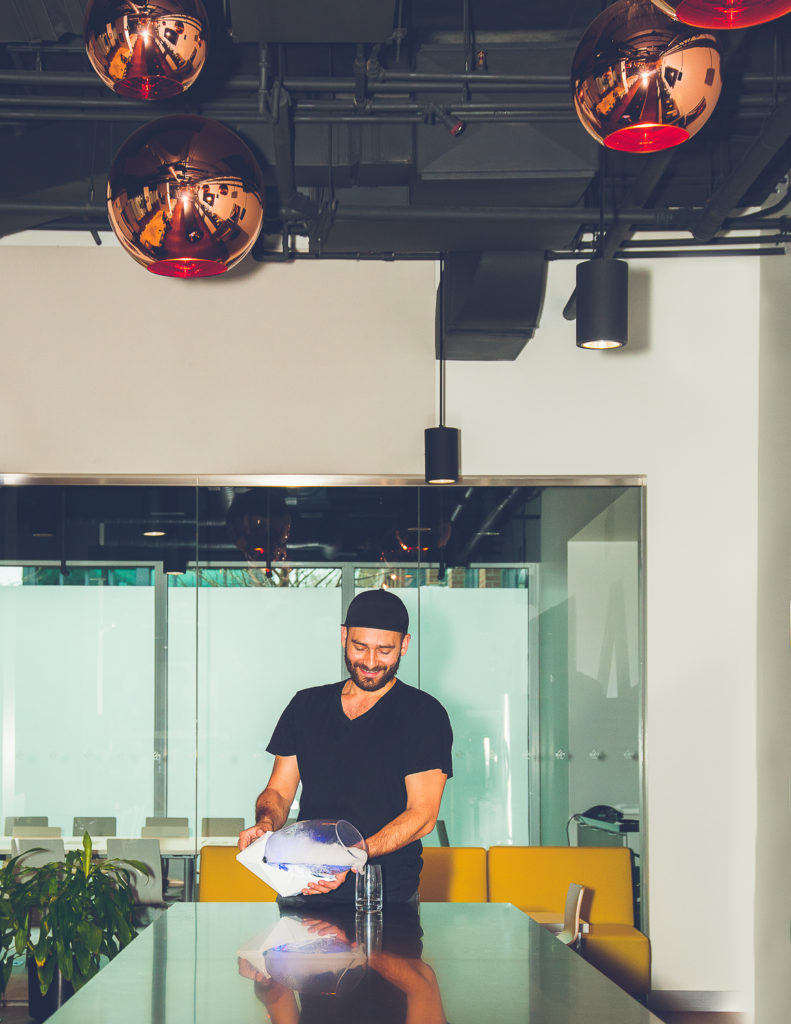 According to Eydelnant, “what we put in our mouths transforms the entire ecosystem. The environment, climate change, the supply chain, all aspects of the world are driven by what you put in your mouth.” Making food choices impacts the world. Food is also a platform for storytelling, sharing narratives and connecting with others.
According to Eydelnant, “what we put in our mouths transforms the entire ecosystem. The environment, climate change, the supply chain, all aspects of the world are driven by what you put in your mouth.” Making food choices impacts the world. Food is also a platform for storytelling, sharing narratives and connecting with others.
“Part of why I have chosen food as my medium [is that] everyone understands it. Food is a universal medium. Everyone regardless of race, gender, politics, culture…we all understand food.” Eydelnant’s drive is premised on the notion that everyone who works in food has some inherent reason for doing so.
“Food is the original social media. The original way we shared and told stories. It is inherent to our DNA that we connect through food. I was hauling spices [Khmeli suneli] from Georgia across the world, to share with my friends and family the experiences I had there. There is only so much you can share through a photo.” He states this after telling us about his recent trip to Georgia—his parents are Russian, from Georgia, which is located in the Caucasus region where Western Asia and Eastern Europe meet. The region is one of the oldest wine regions in the world, and traditions surrounding Georgian foods, spices and folk medicines have also been formed over millennia. Eydelnant’s work is steeped in his family heritage and his upbringing. Who better to tell us about the future of food and the future of the food business?
THE BUSINESS OF EATING
“We all have the same two hands, two feet. We all need to take ownership of our world. As individuals, we are quite powerful. Single individuals can create massive change,” says Eydelnant. His work takes him around the world to work with and create for a diverse range of clients such as Stella Artois and Art Basel Miami, along with his contributions to academia such as his work in microfluidics (defined as the science and technology of manipulating and controlling liquids). Where does he think we’re headed in the business of food and beverages? Gone are the days where the corporation was the idea of a distant entity, and the market was something the average person could not participate in. Today’s consumers are involved and have opinions, and let’s not forget that restaurateurs are consumers too. Individuals today are “disrupting and transforming the ways that we source and eat food,” says Eydelnant, and he’s really excited about it.
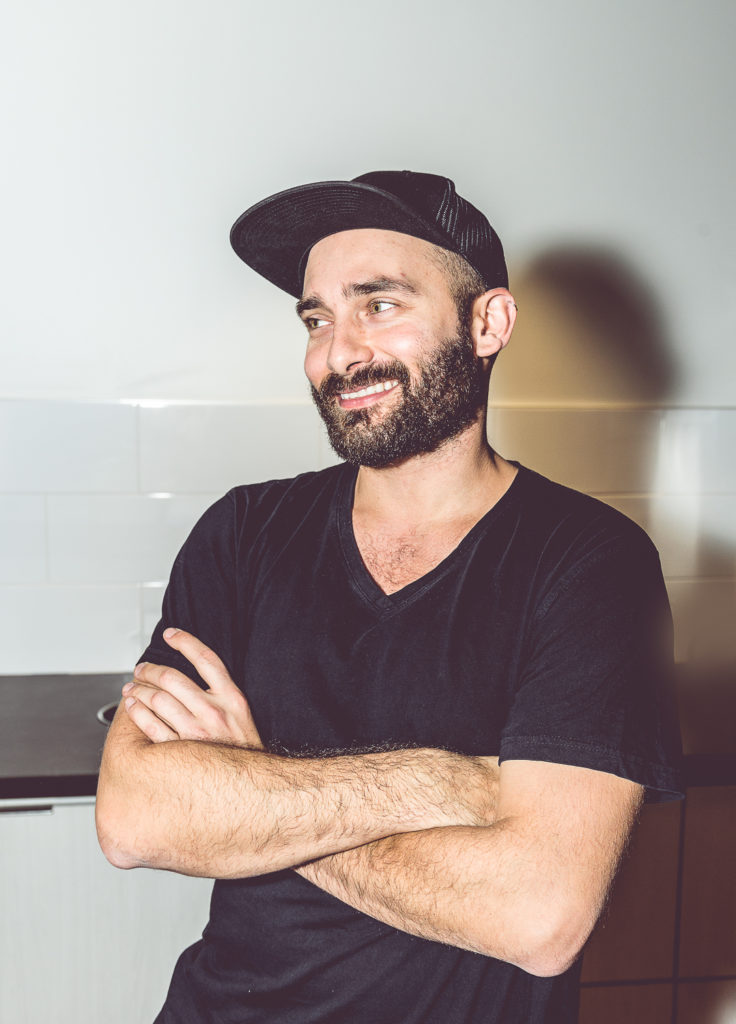 What is the connection between the food we are consuming and the result on physiology? Our perception of food is connected to the sensory and the emotional parts making up the entire eating experience.
What is the connection between the food we are consuming and the result on physiology? Our perception of food is connected to the sensory and the emotional parts making up the entire eating experience.
Eydelnant believes that our focus should be on the food experience, food attraction and food engagement, through the lens of creating what Eydelnant calls true “moments of delight.” What does the science look like? It’s called “crossmodalism,” which is defined as perception that involves interactions between two or more different sensory modalities (e.g., taste and sound, or taste and sight). We are seeing the emergence of people-driven academia, the maker movement, the DIY movement, the hacker movement; whatever we call it, people are realizing that knowledge can be shared and we can shape our future. This is transforming the business world as we know it in our global food community.
NEUROGASTRONOMY
Does food with a louder crunch taste better? Can the brain be tricked into believing that spinach tastes like chocolate? Science says yes. Neurogastronomy looks at what we eat, why we like what we eat and how we eat. Gordon Shepherd, a neurobiologist at Yale University coined the term “neurogastronomy” in 2006 to describe a discipline of the biochemistry of food preparation, the molecular biology of the olfactory receptors, and the knowledge of odour images and the brain flavour system. (Source: The International Society of Neurogastronomy)
RESTAURATEURS—PLAY WITH YOUR FOOD!
Experiment with taste, smell, sight, sound and texture. Not only in the food you’re preparing, but also in the room, on the table, on the walls and in the air around you.
IMMINENT INNOVATIONS IN EATING
Where is food made, how is it made, in the field or inside a structure? The near future of food involves robots for harvesting, called ‘agbots’ and drones, and cellular agriculture in the laboratory. Eydelnant says that meat grown in a laboratory setting, though scientifically possible, is much further down the road. Vertical farming—growing crops on top of each other, rather than across acres of land—is happening now and it is transforming how food is produced. Emerging agricultural technologies and concepts are being designed with sustainability and a better, more nutritious product in mind.
In the next few years, we will see milk and cheese products made in a laboratory on store shelves, using fermentation to create foodstuffs that are identical to traditional milk products. “This is happening, this is tomorrow,” says Eydelnant. Empowering independent operators to produce is another transformation underway in food. Units allowing food production in the home and in restaurants are being designed as part of the quest for alternative and local sources for the things that we eat. Restaurateurs will be able to grow their own products for harvest on premises. It doesn’t get much fresher than this.
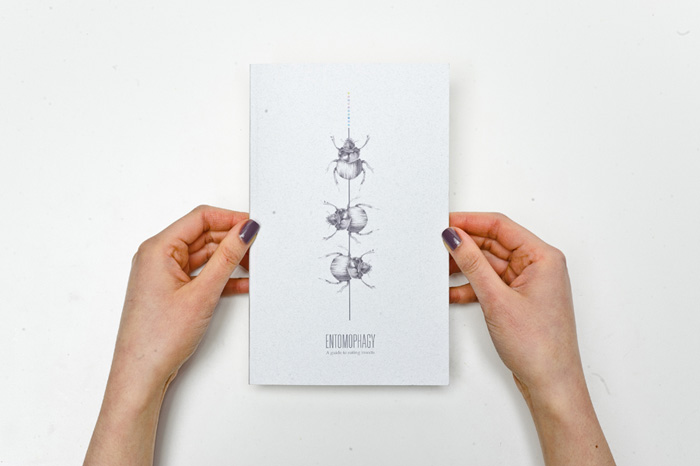
THE BUZZ ABOUT BUGS
There has also been a huge emergence of insect-based proteins in the market. Ideally, the global population will be using multiple sources of protein—vegetable, insect, lab-grown and traditionally-farmed. Sustainability means that we need to eat from a mixed protein portfolio. One of North America’s largest farmers of insects for human consumption is Entomo Farms based out of Campbellford, Ontario. Founded and run by three brothers, Jarrod, Darren and Ryan Goldin, Entomo has been farming insects for the reptile trade for over 12 years. Then, in 2013, the Food and Agriculture Organization of the United Nations published a ground-breaking paper on the sustainability of edible insects; this was a landmark paper that Jarrod Goldin credits with promoting the practice of entomophagy (the eating of insects) in North America. Entomo was North America’s first human-grade insect farm. They farm Banded Crickets and Mealworms. “We are an ingredient company; we convert crickets and mealworms into powder,” says Goldin. Then they wholesale the powder to other companies for use in food products like protein bars. Under their Bug Bistro brand, Entomo Farms are also producing edible insect snacks for the everyday consumer.
